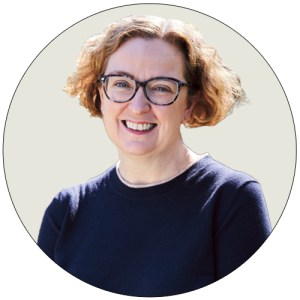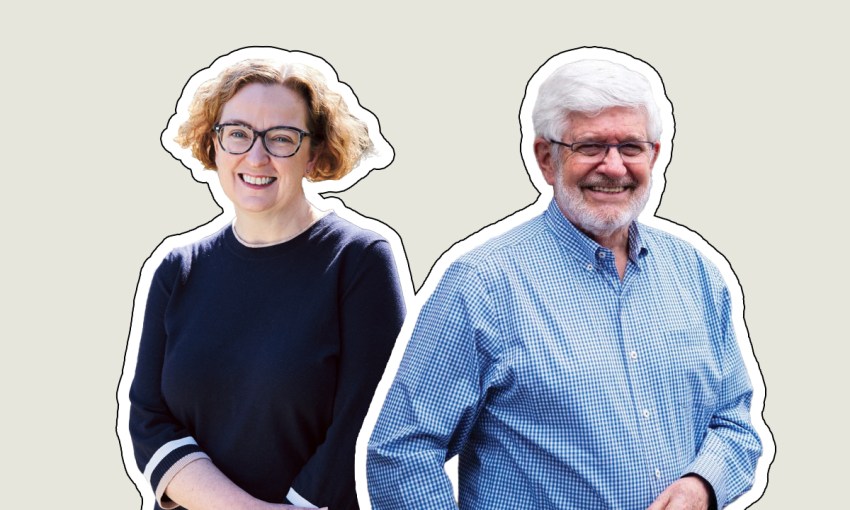Two thinkers known for dwelling on the past and future offer reflections on how we can live better today.
Going forward, looking back
How can the past help shape a better future?
Words: Keith Conlon OAM, as told to Johnny von Einem

I’ve got this theory that I was preparing for my Postcards career, and this whole damn thing that I’m still doing, in the back of my mum and dad’s Morris 8/40 when we went off on camping trips.
My mother would always say, ‘Gee, that old farmhouse out there, that could tell some stories’, and my dad was always keen to go to the nearest lookout or museum.
For some kids, that maybe wouldn’t stick, but for me, looking at a monument and thinking, ‘What does that mean, and where does that fit?’ that certainly turned me on.
One thing it does is it enriches your daily life. You see stuff. It’s a bit like being a photographer; you bring a different eye. It’s enriching to know about it, and you just keep getting richer, because once you’re turned onto it, then it leads places.
We don’t know much about our South Australian history. I’ve never blamed the people for that. I think it’s our fault – we haven’t told them. We haven’t made it available to them in a way that fires them up.
Young creatives, whether they’re making gin or painting pictures or whatever, they love heritage. To them, I think it speaks of character and a sense of a story.
It reminds us of where we’ve been and how we got here, and there’s sort of a sense of continuity. There’s a sense of place about it.
Now, that sounds a bit dry, but it’s: Who are we? What are we? Why do I love being in Adelaide?
As soon as you tell a story, it seems to me that people then get it. And people love hearing the story, love knowing it.
One would hope that if we could increase the sensitivity of the community as a whole, it would at least be politically a good idea – and even better, it would be just a good idea for the community’s sake – to say, ‘How can we embrace heritage and live side by side with it so that we’re all gaining from it?’
If we understand how we got here and why we are the shape we are, then it gives us a chance to go forward with a better understanding of the pieces of the mosaic that we are.
We’ve got a rich multicultural heritage which is celebrated, and we ought to be riding on that wave and building on it. But that will include telling where we’ve come from.
There’s an exciting future ahead if we embrace that and share in our riches.
That means understanding our past, learning from it and going forward.
How can the future make a better today?
Words: Dr Kristin Alford

For a city often characterised by heritage and hesitation, Adelaide is surprisingly focussed on the future: a 30-year plan for Greater Adelaide, community visions for 2040 and beyond. The investment in our infrastructure means decisions are shaping our longer horizon all the time.
And yet a complaint I hear is we are trapped in electoral cycles, unable to anticipate more than a few years ahead. If our politics are representative of the people, then this tendency to weight short-term aspirations also falls on us.
In our personal lives we think about the future all the time – the planning of our days, weeks, months, in the hopes we have for our careers and our families. But perhaps our dreams are already influenced by what we already know, repeating patterns of the past.
Recently I’ve connected with futurists from around the world through several different forums. I noted three things that futurists tend to do that enable more longer-term conversations.
First, they clocked assumptions and asked why. They mentioned underlying patterns of behaviour and challenging their fixedness.
It may feel to us like intergenerational patterns of disadvantage are ingrained, or that the city’s conservatism doesn’t budge, but recognising and naming these patterns makes them changeable. Change may still be difficult, but it becomes possible. In this act of curiosity, we are no longer inheriting the future but interrogating it.
The next thing they did was twist and extrapolate. They took an idea like the metaverse and ran faster with it. They asked what it could be at the same time as making fun of the pomposity of it. They found opportunities for get-rich-quick schemes and economic transformation, they voiced ethical concerns and made dark jokes. They rarely shut down the conversation. Before we propose or endorse decisions, especially in our public spheres, it helps to make space to be freely playful.
Finally, they identified vision. In a global community there are many views on how the future should be shaped, so it was not about only identifying a singular vision. Instead, it was about deeply understanding the drivers and culture that might make a specific vision work coherently, and articulating inconsistencies that might cause failure or corruption.
Adopting these practices of noticing, play and envisioning seem to allow for longer-term thinking. A city filled with people engaging in this way may avoid the pitfalls of inertia and blind inheritance and create better longer-term living.




